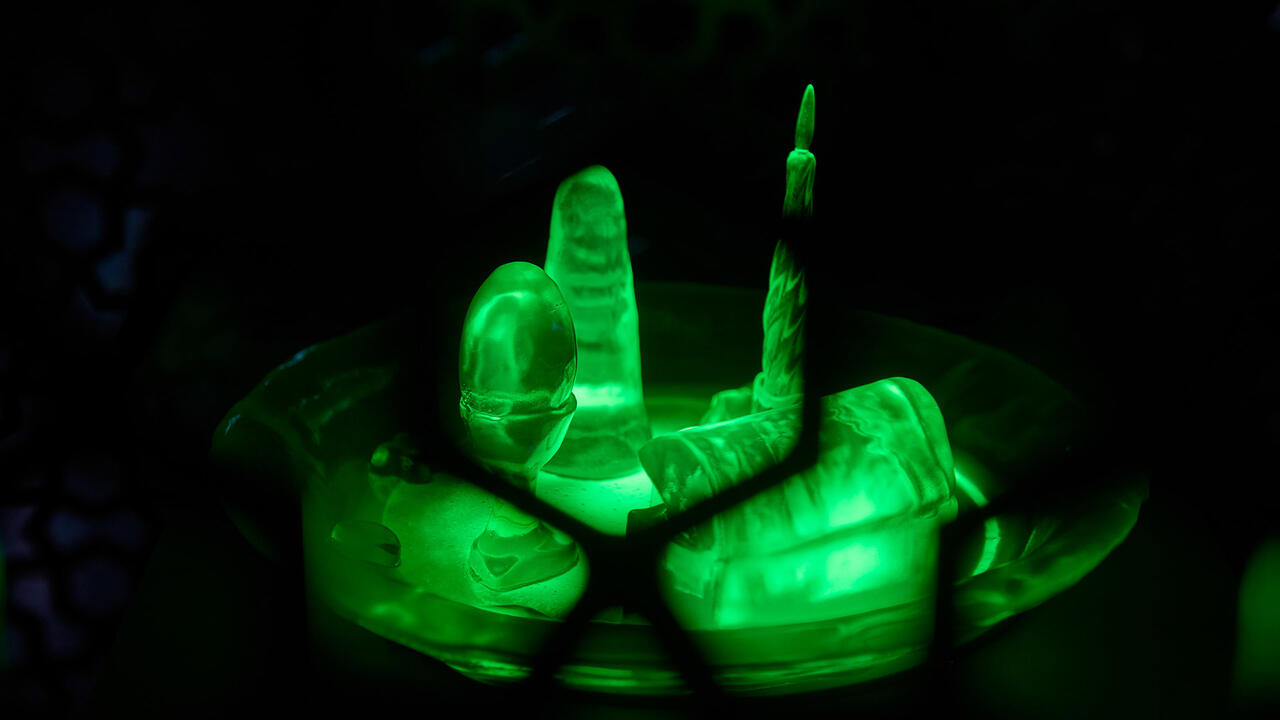Sallisa Rosa Forges Her Own Universe
At the Pinacoteca de São Paulo, the artist creates a constellation of living memory for her first solo institutional show in Brazil
At the Pinacoteca de São Paulo, the artist creates a constellation of living memory for her first solo institutional show in Brazil

Amidst the hubbub and revelry that is Miami Art Basel, I unfortunately missed Sallisa Rosa’s large-scale, ceramic installation Topography of Memory (2023) – her first US solo presentation – at the Collins Park Rotunda in Miami Beach this past December. I was fortunate enough, however, to be able to catch the Brazilian-born, Amsterdam-based artist’s immersive and impressive installation this spring when it travelled to the Pinacoteca de São Paulo’s newly built contemporary art building, Pina Contemporânea.

Commissioned by Audemars Piguet Contemporary and curated by Thiago de Paula Souza, the project is an ethereal landscape for viewers to explore and contemplate ideas of longing and collective memory. Housed in Galeria Praça – a small structure designed in 2004 by Paulo Orsini, which juts out of the Pina Contemporânea complex – Topography of Memory transforms the space into an auburn-hued sanctuary, comprising more than 100 ceramic objects. Chalky globes hang from the ceiling and layered clay stalagmite forms rise from the floor. The vibe is both calming and eerie. You could easily leave it at that – a work whose beating heart is its pleasing ambience – if it weren’t for how these objects are made.

Rosa’s clay is painstakingly collected from the Itaboraí region outside of Rio de Janeiro in a process that, though laborious, is a meditative act of connecting to her past – a means of discovering the secrets of her disappearing Indigenous history through the ancestral lands of her people. As she notes in the show’s accompanying literature: ‘The earth is the place for memory.’ Using a traditional local firing process, Rosa’s handmade clay sculptures are placed in a subterranean kiln above which fires are lit, reaching temperatures of 800 degrees celsius. The result are these lightweight, hollowed containers, whose fragility acts as an apt metaphor for the precarious nature of memory. Inspired by her grandmother’s struggles with dementia, Rosa’s ceramics serve not only as vessels to hold – and potentially restore – collective memory, but as a poignant and genuine attempt to safeguard the evanescing link to her Indigenous past.

The practice of reifying memory through object-making is not new. Here, however, Rosa makes it feel novel, filled as Topography of Memory is with a sense of urgency and grit. There is a magic to this room – a radiating incandescence that is accentuated not only by the warm-toned lighting in the space but by the rays of sunlight that pour into the gallery through the large window bay framing the Jardin de Luz beyond. A glowing heat permeates the room, recalling the fiery pits in which these objects were forged: empty vessels imbued with generational histories and open to receiving more.
Sallisa Rosa’s ‘Topography of Memory’ is on view at Pinacoteca de São Paulo until 28 July
Main image: ‘Topography of Memory’, 2024, exhibition view. Courtesy: the artist and Audemars Piguet Contemporary; photograph: Levi Fanan
























